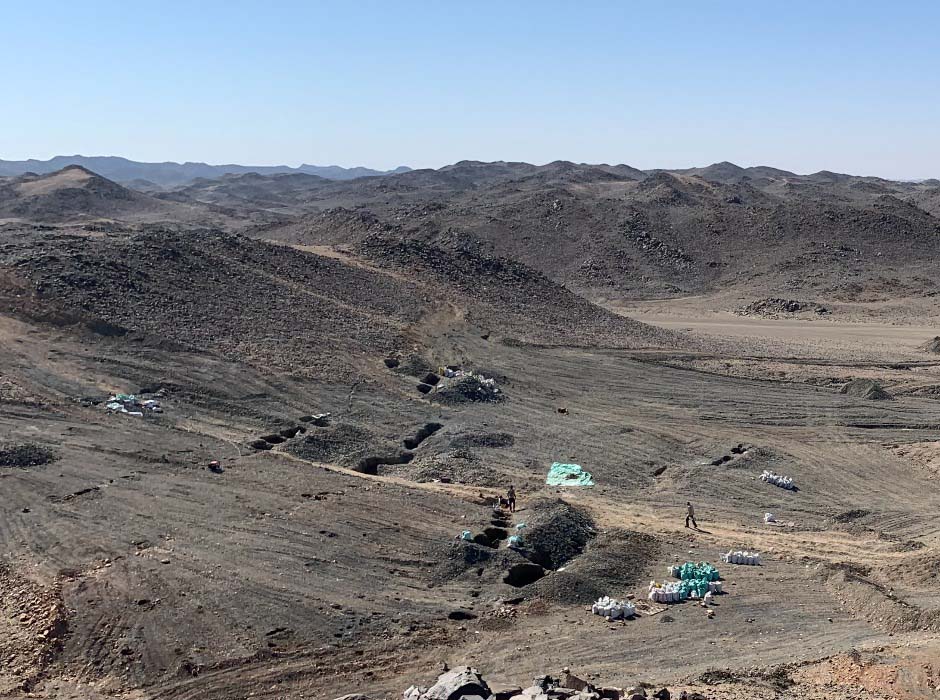SRK Exploration began working with Nubian Mining Company (NMC) in 2019 on its newly acquired, 666 square kilometres South Aswan Block gold project in the southern Eastern Desert of Egypt.
The region is dominated by the Allaqi-Heiani Suture (∼730–700 Ma), the northernmost arc-arc suture on the Egyptian side of Arabian Nubian Shield. The Allaqi-Heiani suture is a ∼50 km-wide deformation zone extending for more than 250km and hosts many occurrences of orogenic-style gold-bearing quartz veins. Mineralisation is hosted in a variety of ophiolitic and island arc metavolcanic-metasedimentary sequences, but deposits are always associated with a strong structural control. Many of these high-grade, low tonnage veins were mined for gold since the Early Arab Period and then sporadically until the mid-20th century. Immediately north of the Aswan South Block lie the Um Ashira and Hairiri mines, and to the south the Haimur and Um Garayat mines. Those to the north are currently being exploited by the Shalateen Mining Company.
SRK Exploration conducted a licence-wide geological interpretation using multispectral ASTER and Sentinel-2 satellite imagery , that was verified by SRK ES and NMC field teams through reconnaissance mapping. Artisanal workings identified in satellite imagery provided additional targeting criteria. Targets were prioritised and programmes of detailed mapping, trenching/channel sampling and drilling were planned.
In 2020, SRK Exploration contributed the technical aspects of NMC’s submissions to the International Bid Round for gold and associated minerals licences in Egypt. This involved a compilation of historical exploration and mining reports and public domain geological information, and design of an exploration programme for the property of interest. NMC was subsequently successful in its bid for the 175 square kilometres Um Rus Block, a gold exploration licence surrounding the historical Um Rus gold mine 50km north of Marsa Alam.
The Um Rus tonalite-granodiorite intrusion covers an area of ~6 square kilometres at the eastern end of the Neoproterozoic, ENE-trending Wadi Mubarak shear belt. Gold-bearing quartz veins are found throughout the intrusion and were mined by the ancient Egyptians, and between 1900-1907 at the Um Rus underground mine on the eastern edge of the intrusion.
SRK Exploration completed a licence-wide structural analysis of satellite imagery and is now following-up on priority targets with detailed investigation using conventional field mapping and sampling, supplemented by interpretation of high-resolution UAV (drone) imagery.

